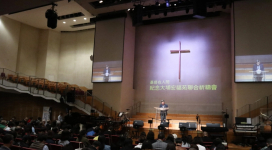How do you teach the Bible in public schools?
Very carefully.
Yet this academic year, 78 U.S. school districts in 26 states are boldly embarking on a newsworthy experiment. They’re offering high school elective courses using a new textbook, The Bible and Its Influence alongside Bible versions chosen by each student.
More schools might have signed up but the all-important teacher’s edition of the book wasn’t available for assessment till late August.
The teacher’s version, by freelance writer and former college religion teacher Marjorie Haney Schafer, tells educators to cultivate "respect" — for the U.S. Constitution as interpreted by courts, for Bible scholarship, for divergent opinions about the Bible, for various religions and for the scriptural text itself.
Don’t "disparage the Bible or treat its content lightly," but also "avoid uncritical adulation" that violates academic objectivity, Schafer advises.
A tall order. But Influence strives for non-sectarian attitudes and cleverly slides through potential trouble spots — for instance, creation in the Book of Genesis and the prophetic predictions in the Book of Revelation.
Are such courses even legal? The U.S. Supreme Court answered yes in its famous 1963 ruling in Abington School District v. Schempp, which barred ceremonial school Bible readings. It stated that "the Bible is worthy of study for its literary and historic qualities" so long as material is "presented objectively as part of a secular program of education."
In practice, however, schools have shied away from Bible courses and potential controversy. Surveys show widespread biblical illiteracy among young Americans, much to the distress of high school and college teachers who recognize Scripture’s central role in culture and history.
"Plenty of high school students don’t even know who Moses was," lamented a favorable review of the textbook from the New York State School Boards Association.
Influence was edited by Cullen Schippe, retired vice president with textbook publisher Macmillan/McGraw-Hill, and businessman Chuck Stetson, leader of the nonprofit Bible Literacy Project that publishes the textbook. Dozens of Protestant, Catholic, Orthodox and Jewish experts representing various standpoints served as consultants.
The textbook hasn’t roused major opposition from church-state separationists. Marc Stern of the American Jewish Congress, a leading lawyer advocating strict separation, calls it "an excellent and evenhanded introduction" that "without question" meets constitutional standards for public schools.
Surprisingly, brickbats come instead from conservative Protestants who favor an older market rival, the course outline published by the National Council on Bible Curriculum in Public Schools.
The National Council’s Web site posts a typical attack from the Rev. D. James Kennedy, a TV preacher and conservative activist, who calls the new textbook "extremely radical" and "very anti-biblical." Bible Literacy’s Web site posts replies to such critics.
True, Influence doesn’t supply what such conservatives would want for church instruction, but it does seek fairness for all sides. The teacher’s edition claims the course acknowledges both "the science of biblical criticism" and "people of great biblical faith and evangelical spirit."
Actually, conservative Protestant leaders are divided and some endorse Influence, among them the Rev. Ted Haggard, president of the National Association of Evangelicals. Other boosters include the chairman of the Catholic Biblical Association, the editor-in-chief of the Jewish Publication Society and numerous scholars — the sort of coalition that’s rarely achieved when it comes to the Bible.
Bible Literacy designs its material to implement a 1999 accord, The Bible and Public Schools, that it brokered with the First Amendment Center. Significantly, that accord has been endorsed by seven major public education organizations.
A Nov. 20 panel during a Washington, D.C., convention of university professors in the American Academy of Religion will mull further the whole question of the Bible’s role in public education.
Copyright © 2006 The Associated Press. All rights reserved. The information contained in the AP News report may not be published, broadcast, rewritten or redistributed without the prior written authority of The Associated Press.







